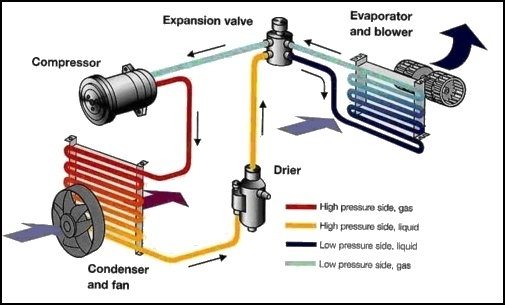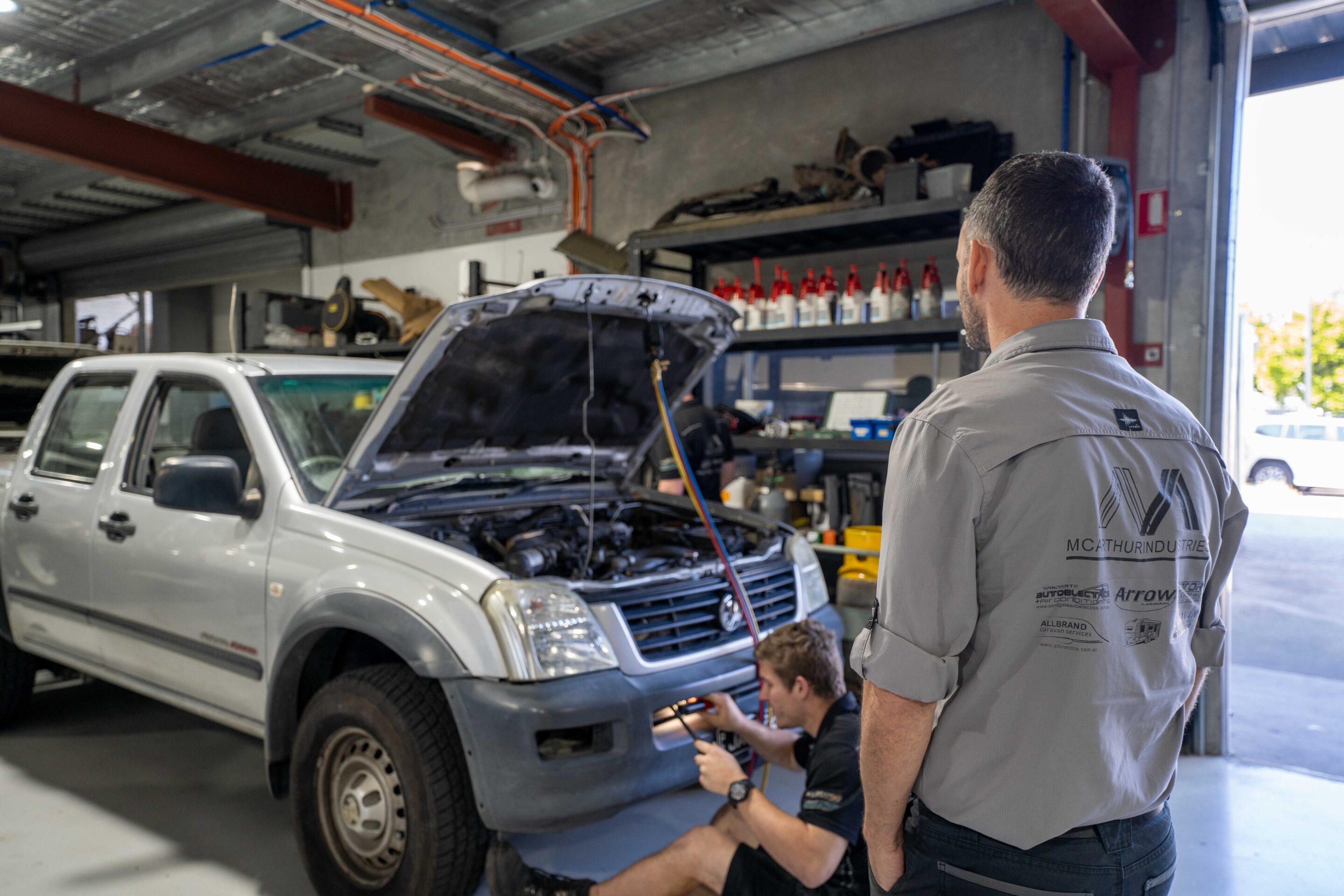During the humid/hot season, the air conditioner can be a Godsent – the best invention by mankind.
Now, the cool breeze comes from more than just flipping a switch to turn on the AC. The Car Aircon System is made up of several components, including the piston and compressor. When these parts work together, they regulate air pressure, circulate heat, and remove moisture from the air to keep the cabin comfortable.
A/Cs all over the world work with more or less the same concept and that is thermodynamics and physics. When various parts are put together, a simple wiring can make them function as a whole new item.
How it works
There are, in particular, 5 parts in the A/C system that work hard to ensure that you get that nice cool breeze during the blazing summer.
Compressor
Without a compressor, say goodbye to the cold wind from your A/C. While it is still possible to create cool air without one or some other parts of the air conditioner, it is impossible without the compressor (unless you bring a box of ice to cool your car down, which is actually possible).
The compressor is a vital component of the Car Aircon System, responsible for pumping refrigerant throughout the system. It compresses the refrigerant at high pressure, enabling efficient circulation and initiating the cooling process—something only the compressor is designed to handle.
Condenser
The condenser is a key part of the car aircon system, responsible for converting the refrigerant from a gas into a liquid. If you’ve ever refilled your AC refrigerant, you may have noticed it’s typically in gas form. However, for the system to produce cold air effectively—especially at the lowest settings—the refrigerant must be in liquid form. The condenser achieves this by releasing heat as air flows over it, cooling the high-pressure refrigerant and allowing it to condense into a liquid, ready for the next stage of the cooling cycle.
Note that a condenser is not the same as a radiator, it just looks similar (don’t we hope car manufacturers can do something about similar looking parts of a car?).


Receiver-dryer (Reservoir)
Like the name implies, it receives the refrigerant that is now in liquid form. This small reservoir’s role is to remove any moisture, debris, and other substances you don’t want to see blowing into your face and car. Without removing them, the system will go awry in no time as debris blocks the airway and its several parts will leak, freeze or break.
If moisture is allowed into the AC system, you may find yourself in the mechanic shop sooner than you expected. The moisture can lead to ice crystals forming and result in air blockage and mechanical damage.
Thermal expansion valve/Accumulator (orifice tube)
Some vehicles use different configurations in their car aircon system, featuring either a thermal expansion valve or an accumulator. While both serve a similar function, they operate differently. What they share in common is their role in preventing moisture from exiting the evaporator—moisture that could otherwise damage the system. Additionally, both components contain a desiccant, which helps filter and clean the refrigerant before the cooled air is released into the cabin.
Now, how are the accumulator and expansion valve different?
The expansion valve in a car aircon system opens and closes according to the level of coolness you’ve set. At the same time, it also adjusts automatically based on its sensing bulb to ensure that the refrigerant is cool enough for the temperature outside the A/C. It is flexible and decides how much should be allowed into the evaporator.
Orifice tubes, on the other hand, are fixed and do not adjust. You’re limited to the same size opening until it’s time to replace the tube. So, which part of the car aircon system regulates the amount of refrigerant? That task primarily falls to the compressor, along with several supporting components that help adjust the flow based on your cooling demands. In cases where the compressor alone isn’t sufficient, some car owners choose to install an external valve to help regulate the cooling system more effectively.
From this, you can probably tell that orifice tubes in a car aircon system need to be replaced periodically. When installing a new one, it’s important to follow the manufacturer’s specifications to ensure compatibility and performance. Orifice tubes are generally affordable and often considered the more economical option. In contrast, a thermal expansion valve offers greater control over cooling performance but tends to be more expensive to install.
Evaporator
The evaporator is typically located near the passenger seat, often behind or around the footwell. As a key component of the car aircon system, the evaporator cools the refrigerant and ensures that refreshing cold air circulates through the cabin. It works by absorbing heat from the interior, allowing the vehicle to cool down. This process is what produces the cold airflow that comes through the vents once you switch the A/C on.
Understanding how the components of the car aircon system work together to provide a cool breeze is essential when diagnosing issues. For instance, if your A/C is no longer blowing cold air but the airflow pressure remains the same, the problem may stem from insufficient refrigerant reaching the evaporator or a malfunctioning evaporator itself. A sudden drop in refrigerant levels often indicates a leak in the system, which can typically be detected using a fluorescent dye during inspection.
Therefore, it is important to know the respective functions of the various parts to better diagnose a fault in the AC in case of emergencies.
You can check out our other articles on how to fix your cars aircon system and how to refill the refrigerant of the AC. If this is beyond your abilities, do not hesitate to contact us today or call us at (07) 3269 3158 or pop into our workshop 113 Connaught Street Sandgate QLD 4017.

